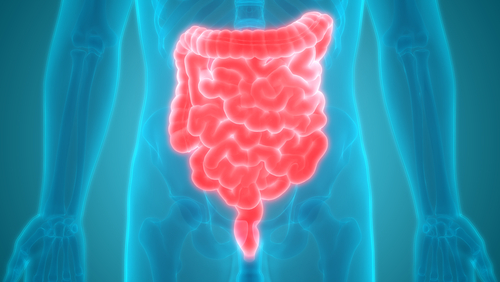Gut Bacteria Affect Metabolism of Parkinson’s Therapy Levodopa, Study Shows

Levodopa, one of the main medicines used to treat Parkinson’s symptoms, can be converted into dopamine by gut bacteria, researchers report.
The findings might explain why levodopa treatment is less effective in some patients.
The study, “Gut bacterial tyrosine decarboxylases restrict levels of levodopa in the treatment of Parkinson’s disease,” was published in Nature Communications.
Parkinson’s disease is characterized by low levels of dopamine, a chemical brain messenger essential for neurons involved in movement control.
In terms of treatment, patients cannot take dopamine directly, as the compound is broken down by the body before it reaches the brain. Levodopa crosses the blood-brain barrier and is taken up by dopaminergic neurons, which convert the chemical into dopamine, which helps manage disease-related motor symptoms.
Studies have suggested that gut bacteria can affect treatment effectiveness in several diseases; particularly in Parkinson’s, the amount of levodopa that reaches the brain varies among patients.
“It is well established that gut bacteria can affect the brain,” assistant professor in microbiology Sahar El Aidy, PhD, and this study’s lead investigator, said in a press release. “There is a continuous chemical dialogue between gut bacteria and the brain, the so-called gut-brain axis.”
Want to learn more about the latest research in Parkinson’s Disease? Ask your questions in our research forum.
However, it remains to be explained if inter-patient variations in gut bacteria composition and functionality contribute to treatment response fluctuations in Parkinson’s disease patients who require a higher daily treatment dosage regimen.
Researchers from the University of Groningen in The Netherlands analyzed the effect of levodopa metabolizing bacteria in the middle section of the small intestine (jejunum), where levodopa is absorbed.
Using rat jejunum bacteria samples, researchers saw that an enzyme called tyrosine decarboxylase, which normally converts tyrosine into tyramine, also efficiently converted levodopa to dopamine in the gut. Enterococcus bacteria, commonly found in the intestines, were responsible for such enzymatic activity.
To understand if they could somehow inhibit levodopa’s conversion, the Dutch team “fed” the bacteria with a high concentration of the amino acid tyrosine, the main substance that tyrosine decarboxylase acts on, but tyrosine’s abundance did not prevent levodopa’s metabolization.
As part of their treatment regimen, Parkinson’s patients are given a decarboxylase inhibitor, like carbidopa, to block peripheral metabolism of levodopa to dopamine, allowing a greater concentration of levodopa to reach the brain.
Scientists studied the effect of human decarboxylase inhibitors, including carbidopa, benserazide, and methyldopa, on the bacterial tyrosine decarboxylase. None of the tested inhibitor compounds blocked levodopa’s enzymatic transformation.
“It turned out that, for example, the inhibitor carbidopa is over 10,000 times more potent in inhibiting the human decarboxylase,” said El Aidy. This could be due to species-specific changes in carbidopa’s chemical structure, indicating that a more effective levodopa treatment could be achieved by co-administration of tyrosine decarboxylase inhibitor targeting both human and bacterial forms of the enzyme.
“[C]ommonly applied inhibitors of human DOPA [levodopa] [tyrosine] decarboxylase in levodopa combination therapy do not inhibit bacterial TDC [tyrosine decarboxylase] dependent levodopa conversion, implying levodopa/carbidopa (levodopa) combination therapy for PD [Parkinson’s disease] patients would not affect the efficacy of levodopa in situ [locally] by small intestinal bacteria,” researchers wrote.
These findings confirm the gut bacteria’s ability to influence local levels of levodopa treatment and suggest that the presence of tyrosine decarboxylase could reduce the amount of levodopa available in the bloodstream of Parkinson’s patients.
To test the latter hypothesis, investigators analyzed stool samples from patients who were on a normal or high dose of levodopa. They reported a strong positive correlation between the relative abundance of the bacterial gene encoding for tyrosine decarboxylase and the need for a higher levodopa/carbidopa treatment dose, as well as with disease duration.
To further understand the concept that the amount of tyrosine decarboxylase in jejunum’s bacteria affects bloodstream levels of levodopa/carbidopa and dopamine, scientists orally administered levodopa plus carbidopa to 18 wild-type (healthy) rats and analyzed animals’ blood 15 minutes after administration (time point when levodopa is at its higher concentration in rats).
Results showed that higher abundance of bacterial tyrosine decarboxylase in the rats’ jejunum decreased plasma levels of levodopa. The ratio between dopamine and levodopa/carbidopa levels in the small intestine positively correlated with bacterial enzyme amount.
Researchers then treated 10 rats with a subtype of Enterococcus bacteria known as Enterococcus faecalis that did not have the tyrosine decarboxylase gene and compared their levodopa/carbidopa plasma levels with 10 other rats that were given wild-type (normal, positive for the tyrosine decarboxylase gene) Enterococcus faecalis cells.
As expected, animals treated with wild-type cells had significant lower plasma levels of levodopa/carbidopa than the ones treated with mutant cells.
“Collectively, our data show that levodopa conversion by bacterial [tyrosine decarboxylase] in the small intestine should be considered as a significant explanatory factor for the increased levodopa/carbidopa dosage regimen required in a subset of [Parkinson’s disease] patients,” researchers wrote.
“This is considered to be a problem for Parkinson’s disease patients, because a higher dose will result in dyskinesia, one of the major side effects of levodopa treatment,” El Aidy said, referring to the involuntary, jerky movements patients experience.






